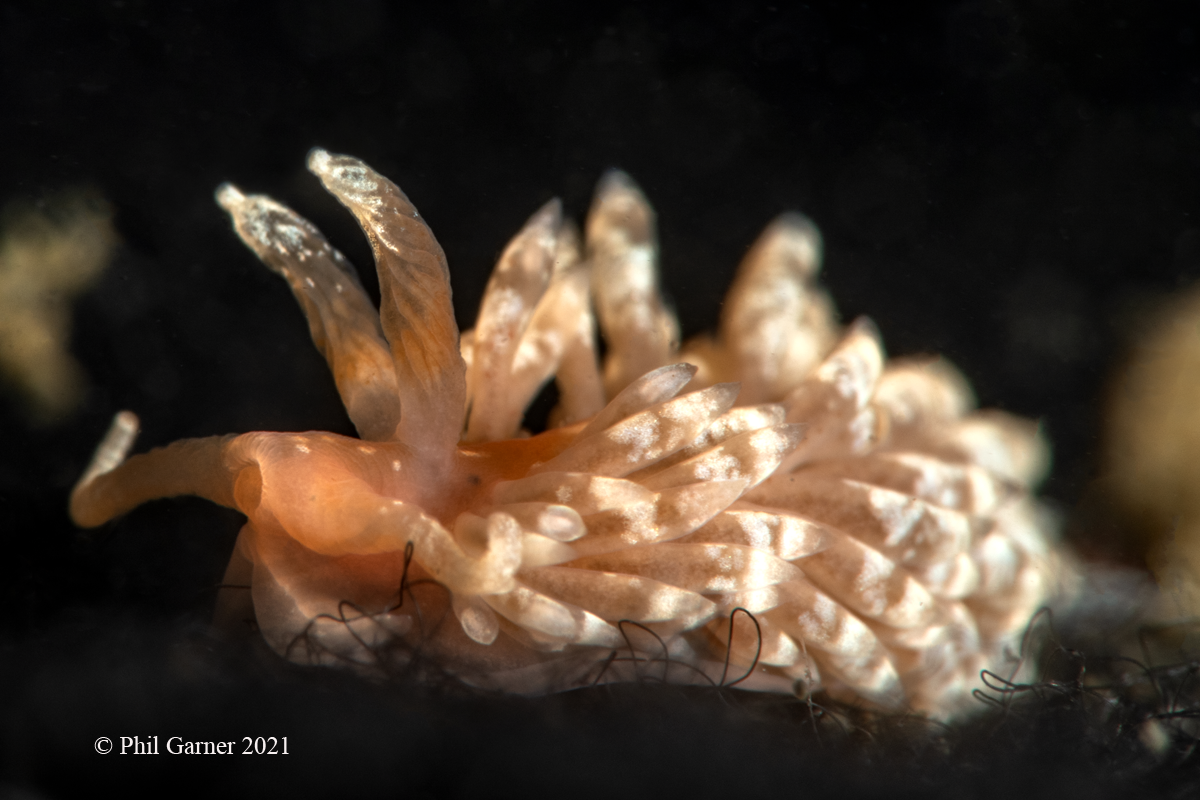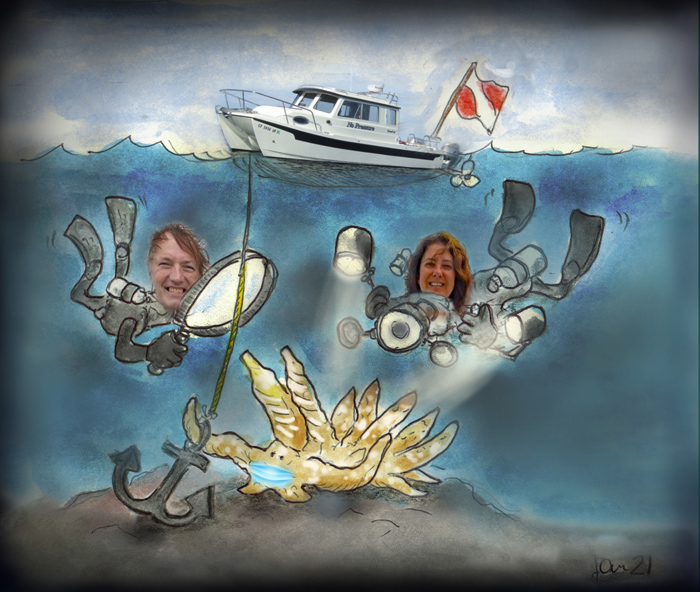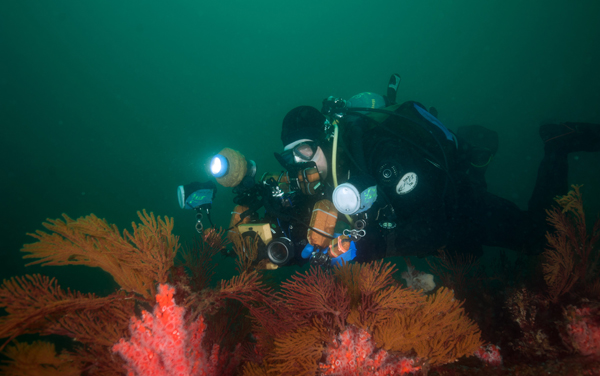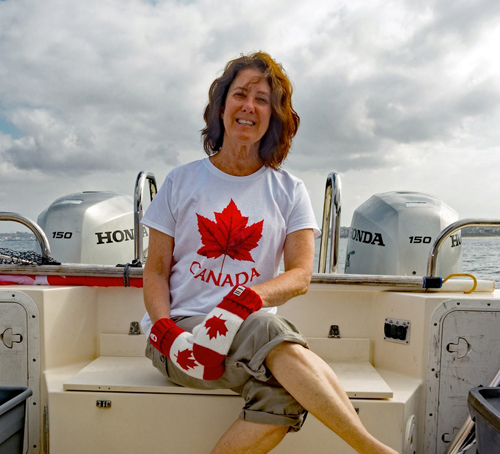 |
Image courtesy of Phil Garner
King Harbor Marina, Redondo Beach, CA
Image courtesy of Jan Kocian |
Anteaeolidiella chromosoma (Cockerell & Eliot, 1905) Well at least a couple of us are able to get wet during this pandemiic. Phil Garner and Merry Passage in Southern California own their own boat so they can escape this craziness and get in an occasional dive. On one recent lucky sojourn Phil found this not-so-common teeny tiny specimen during a "Dock" dive (under the boat). Only 4 mm long, Phil sent me this photo unsure of what it was. I was glad to see that the text in Eastern Pacific Nudibranchs described this little guy perfectly. Maybe a first. The rhinophores are reddish with white tips. The body is dull orange. The midline is clear of cerata and bears irregular small patches of white. Perfect. Like other members of the Aeolididae, it feeds on sea anemones. This uncommon little puppy, whose generic placement has gone from the genus Spurilla to Aeolidia to Anteaeolidia, is a nice find. Dave Behrens Sammamish, WA 98074 Apr., 2021 Send Dave email at davidwbehrens@gmail.com |
Phil on the hunt!
 |
After free diving for a year I was scuba certified in 1989. Most of my dives have been on the reefs and wrecks around the Palos Verdes Peninsula. In 2012 I published my first book,
Diving the Palos Verdes Peninsula, a guide to 25 sites from Redondo Beach to San Pedro. Most weekends I can be found diving with my fiance Merry Passage and friend Kevin Lee in search of uncommon nudibranchs, the smaller the better.
My favorite dive destinations have been Anilao and Vancouver Island for the varied marine life. Another dive site I frequent is the Morro Bay T-Pier. When conditions are favorable we have been able to identify close to two dozen species on a dive there.
Merry, Kevin and I try to dive offshore reefs around Palos Verdes every weekend. I shoot with a Nikon D850 camera in a Subal housing, 105mm lens, and Ikelite DS160 strobes
Send Phil email at Pacificcoast101@yahoo.com |
Merry Passage

Send Merry email at MBPassage@yahoo.com
|

Attention all you Sluggers, and you know who you are! The NSSI 2nd edition is now available in ebook PDF and book form . The hard back version will become available Nov. 1st. Both will cost $65 (individually). You will need to jump through a few hoops to get the electronic version as pdf distribution is protected by Adobe ID!! Please read the following to enable reading your electronic purchase! This new 2nd Edition is updated and reorganized, including 185 new species. Among other features, the new edition includes additional photographs of species, an identification key, and an up-to-date classification reflecting the latest evolutionary relationships. The Indo-Pacific represents the largest expanse of tropical ocean in the world, stretching from the Indian Ocean coast of southern Africa and the Red Sea to the central Pacific of the Hawaiian Islands, Easter Island and the Marquesas. This region supports the most diverse marine fauna of any place in the world for most groups of marine organisms. The nudibranchs and sea slugs are no exception to this rule; there are about 3,000 described species of these organisms in the world and at least 40% of these have been found exclusively in the Indo-Pacific tropics. This book illustrates 2,138 Indo-Pacific nudibranchs and sea slugs, including many undescribed species.
|

|
